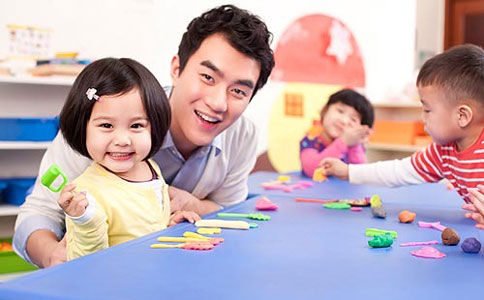Go, piano, dance... There are many kinds of early education in the market. When parents are told that the activities are good for their children's physical and mental development, they can't wait to sign up for their children. They are looking forward to their children's skills.
Some psychologists advise: Don't let early education become "abuse." They believe that for young children, too much forced to limit the freedom of children's activities, too sudden changes in life, will make children become at a loss. For example, contrary to the child's nature, excessive early education for young children, etc., in fact, has inadvertently formed a kind of psychological abuse.
Early education or anxiety
Dr. Zhang Yingli from the Henan Psychological Counseling Center observed that there are indeed young children who are anxious because their parents’ expectations are too high and their playing time is “occupied†by early education. “It’s worth noting that parents never value their children’s psychological development and emotional needs. In fact, play and adequate sleep are the most important things for children.â€
Ordinary and active preschool children, cheerful, love to play with laughter, if suddenly the temper becomes more and more violent, crying from time to time, poor appetite, may have a mental illness!

Early childhood, many children become rebellious
How many children have taught early, or become more rebellious?
Zhang Yingli pointed out that each child has his or her own potential and interest. Parents should first consider whether the child is interested and able to participate when signing up for the course. Simply "compulsory" a child's favorite class will only push the child to the other extreme, causing anxiety.
“Preschool kids may initially entertain for class, but they will become rebellious when they are adolescent, do not participate in any activities, and have no enthusiasm in their studies.â€
She said that parents should give appropriate early education guidance according to their abilities after understanding their children's interests and needs.
How to play is also a matter of learning
Zhang Yingli said that through exploration and interaction, children can learn skills in a natural environment without having to take special early education classes.
She pointed out that it is not easy to let the children have fun. Parents have to follow the children and find the knowledge and accumulation of knowledge from different explorations to let the children use their imagination.
“Put the focus on parent-child quality interaction, parents will find that this is the most worth cherishing.†She suggested that parents should pay more attention to the parent-child activities designed for pre-school children and parents to participate.
Your dog may love to slip into your bed or lounge on the sofa in your home, but there is no doubt that they would love a bed of their own. They may seem content when lying on the floor, but if you are like most dog parents, you know how happy your dog can be when sleeping on a soft, plush surface. Fortunately, when pet dogs rest and sleep, they don't need a human bed to keep them comfortable. All that is needed is a comfortable dog bed to please any shape, breed, age and size of puppy. There are different types of dog beds on the market to choose from, so the process of deciding which one is best for your dog can be a little confusing.
We are here to help! We have combed through a huge range of dog beds to introduce you to the best ones. We have compiled a list of the different types of dog beds and explained the differences so that you will know what to expect from each one. Here are the details.
1. Upholstered beds
Credit: Africa Studio, Shutterstock
The first type of dog bed is known as a bolster. A bolster bed has a soft base and plush bumps that are designed to mimic the nest box that a female dog gives birth in. In nature, a nest box might take the form of a hole in the ground, a hollowed-out tree or a cave of some kind.
In a home or breeder's facility, however, puppies are usually born in homemade or purchased boxes with sides that keep them warm and secure until they can see, hear and walk independently. As dogs get older, they still like the comfort of knowing they are safe, just as they did when they were babies.
A bolster bed is the perfect solution for dogs who like to burrow under the covers or snuggle in a corner when they sleep. The soft bed will allow your dog to sleep comfortably for hours on end, with the sides providing a little extra support and peace of mind while they sleep. This type of dog bed comes in a variety of colours and a number of different styles. Some even look like sofas!
Our favourite upholstered beds.
2. Raised beds
Every dog and owner can benefit from a raised dog bed. This bed will keep your dog off the ground so they don't sleep on any pressure points. Raised dog beds are breathable, easy to clean and maintain and most can be used indoors and outdoors. Even young pups will love snuggling up in the yard or on a raised bed when camping.
Our best bet.
Pet Bed,Dog Beds,Cat's Nest Bed,Dog Bed with Stand,Pet Mats
OYEAL Global , https://www.oyealhome.com